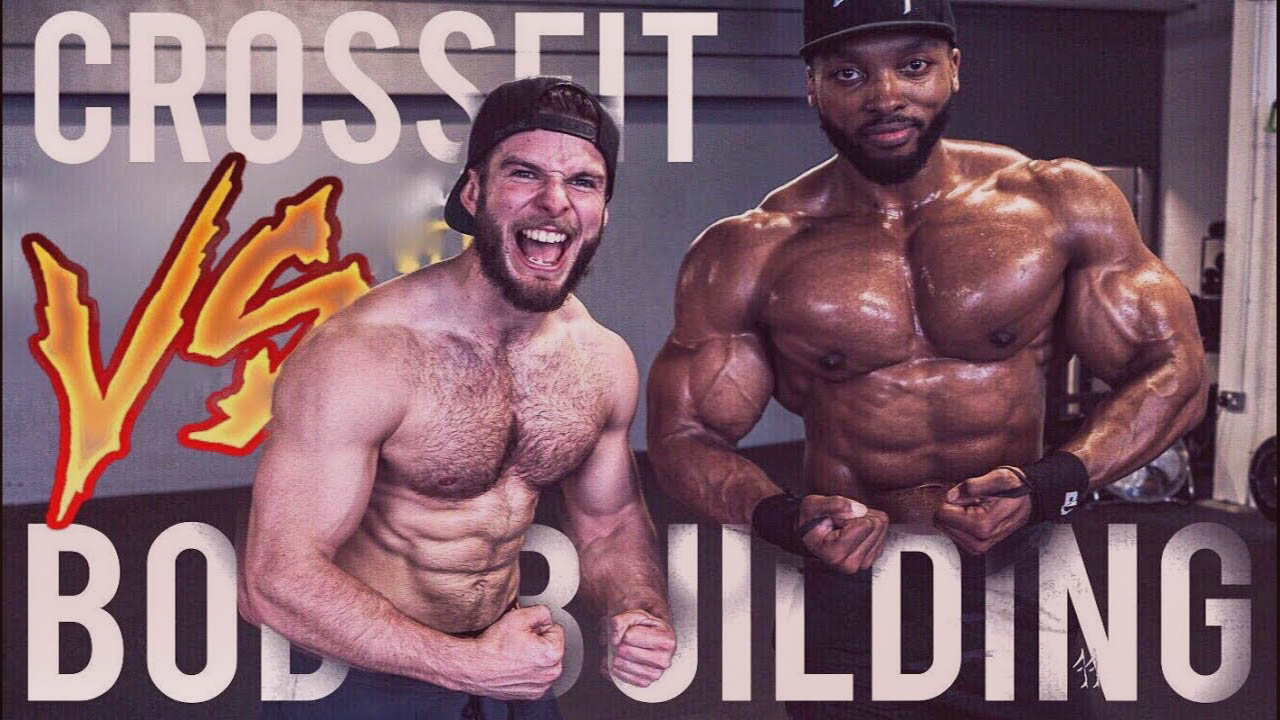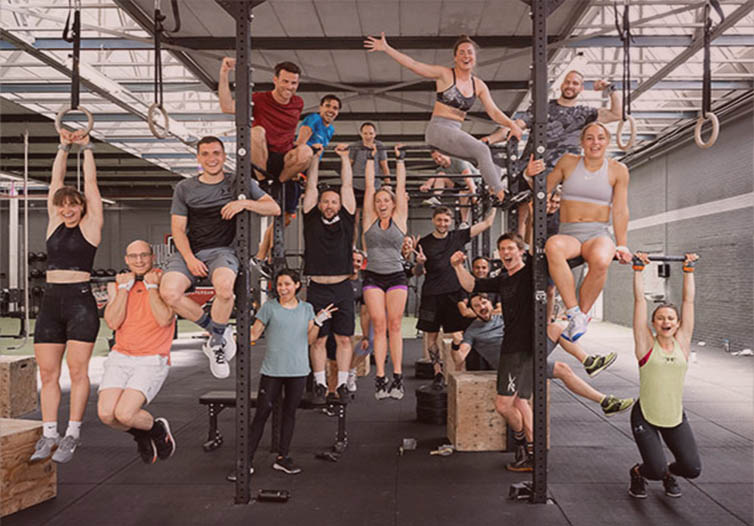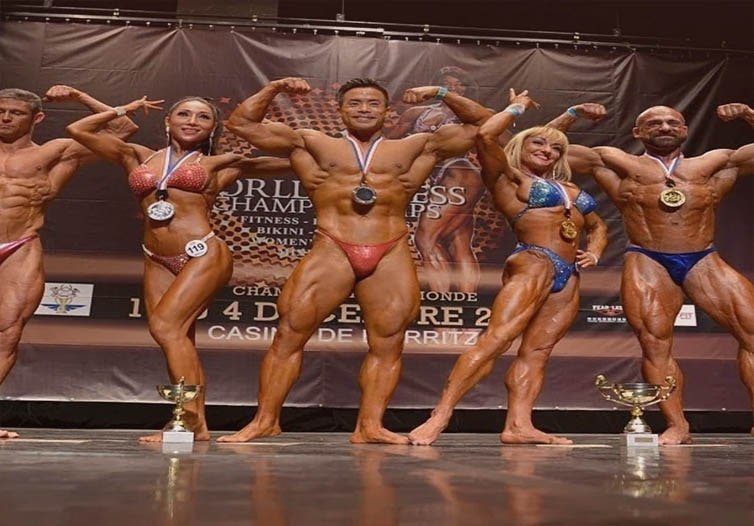Bodybuilding and CrossFit are two popular fitness disciplines that have gained widespread attention and dedicated followings in the fitness community. Both are effective methods for achieving strength, endurance, and overall fitness goals, but they differ significantly in their training approaches, goals, and overall philosophies. This article aims to provide a comprehensive comparison of bodybuilding and CrossFit to help individuals choose the fitness path that best aligns with their objectives and preferences.

Training Focus and Goals
Bodybuilding:
- Training Focus: Bodybuilding primarily focuses on hypertrophy or muscle growth. Workouts involve targeting specific muscle groups with isolated exercises to stimulate muscle development.
- Goals: The main objective of bodybuilding is to achieve a well-sculpted and aesthetically pleasing physique with well-defined muscles and low body fat.
CrossFit:
- Training Focus: CrossFit is a high-intensity functional fitness program that incorporates various elements from different sports and fitness disciplines. Workouts are constantly varied, aiming to improve overall athleticism and functional movements.
- Goals: CrossFit aims to develop general physical preparedness (GPP) and functional strength, allowing participants to excel in various physical activities and challenges.
Training Methods of Bodybuilding vs CrossFit
Bodybuilding:
- Resistance Training: Bodybuilders primarily use resistance training, focusing on lifting weights to stimulate muscle growth and strength.
- Reps and Sets: Workouts involve multiple sets of moderate to high repetitions to exhaust the muscles and promote hypertrophy.
- Rest Periods: Rest periods between sets are usually longer to allow muscles to recover adequately.
CrossFit:
- High-Intensity Interval Training (HIIT): CrossFit workouts often involve high-intensity interval training, combining elements of cardio, weightlifting, and bodyweight exercises in a time-based or AMRAP (As Many Rounds As Possible) format.
- Constant Variation: CrossFit workouts change regularly, preventing plateaus and promoting continuous adaptation.
- Short Rest Periods: Rest periods in CrossFit are typically shorter to maintain elevated heart rates and intensity throughout the session.
Equipment and Facilities of Bodybuilding vs CrossFit
Bodybuilding:
- Gym Equipment: Bodybuilders require access to a well-equipped gym with a variety of machines, free weights, and isolation equipment.
- Facilities: Traditional gyms with weightlifting areas and cardio machines cater to bodybuilders’ needs.
CrossFit:
- Functional Equipment: CrossFit workouts often utilize functional equipment like barbells, kettlebells, medicine balls, ropes, and gymnastic rings.
- CrossFit Boxes: CrossFit is usually practiced in dedicated facilities called “Boxes,” equipped with open spaces for functional training.
Competition and Community of Bodybuilding & CrossFit
Bodybuilding:
- Competitions: Bodybuilders participate in physique competitions, where judges assess their muscle size, symmetry, and conditioning.
- Individual Focus: Bodybuilding is often seen as an individual sport, with athletes training and competing on their own.
CrossFit:
- Competitions: CrossFit offers a competitive outlet through the annual CrossFit Games, where athletes showcase their overall fitness capabilities across various workouts.
- Community Emphasis: CrossFit places a strong emphasis on community and camaraderie, with participants often supporting and motivating each other during workouts.
Physique and Aesthetics Bodybuilding and CrossFit
Bodybuilding:
- Aesthetics: Bodybuilders prioritize aesthetics and muscle definition, aiming for a well-proportioned and chiseled appearance.
- Body Fat: Maintaining low body fat is essential for showcasing muscle definition in bodybuilding.
CrossFit:
- Versatility: CrossFit athletes may have a more athletic and versatile physique, combining muscle mass with functional strength and endurance.
- Body Composition: CrossFit focuses less on extreme muscle definition and more on overall performance.
CrossFit vs Bodybuilding: Which is Better for a Lean Life?
Living a lean and healthy life requires a well-rounded fitness approach that focuses on achieving and maintaining a low body fat percentage while promoting overall health. CrossFit and bodybuilding are two popular fitness methods, each with unique training styles and goals. This section will explore which of these two disciplines is better suited for individuals aiming to live a lean life.
CrossFit for a Lean Life
CrossFit is known for its high-intensity workouts that combine elements of weightlifting, cardio, and functional movements. This approach offers several benefits for living a lean life:
- Metabolic Conditioning: CrossFit workouts often involve intense metabolic conditioning, which can help burn calories and promote fat loss.
- Functional Strength: CrossFit’s focus on functional movements enhances overall strength, agility, and mobility, contributing to an active and lean lifestyle.
- Shorter Workouts: CrossFit workouts are typically shorter in duration, making them suitable for individuals with busy schedules.

Bodybuilding for a Lean Life
Bodybuilding revolves around hypertrophy and muscle development, but it can also be an effective approach for achieving a lean physique:
- Muscle Mass: Increased muscle mass boosts metabolism, leading to more calories burned at rest and aiding in fat loss.
- Nutritional Discipline: Bodybuilding often involves strict nutrition plans, which can help individuals maintain lean body composition.
- Aesthetics: Bodybuilders often strive for low body fat percentages, contributing to a lean and sculpted appearance.
About Bodybuilding vs CrossFit – Which is Better?
Determining whether bodybuilding or CrossFit is better depends on an individual’s fitness goals, preferences, and lifestyle. Both approaches offer unique benefits and challenges, catering to different aspects of fitness and athletic performance.
Bodybuilding:
Pros:
- Muscle Development: Bodybuilding is ideal for those seeking significant muscle growth and hypertrophy.
- Aesthetics: It focuses on sculpting a well-defined and aesthetic physique.
- Individual Focus: Bodybuilders can train at their own pace, targeting specific muscle groups and training styles.
Cons:
- Time-Consuming: Achieving significant muscle gains in bodybuilding often requires long hours of training and a dedicated nutrition plan.
- Limited Functional Fitness: Bodybuilding may not address functional strength and overall athleticism as effectively as CrossFit.
CrossFit:
Pros:
- Functional Fitness: CrossFit improves overall functional strength, endurance, and mobility, translating to real-world activities.
- Versatility: The constantly varied workouts keep individuals engaged and prevent plateaus.
- Community Support: CrossFit fosters a strong sense of community, with participants supporting and motivating each other.
Cons:
- High-Intensity Workouts: CrossFit can be physically demanding, making it less suitable for some individuals, especially beginners.
- Risk of Injury: The fast-paced nature of CrossFit workouts can increase the risk of injury if proper form and technique are not prioritized.
Differences Between Bodybuilding vs CrossFit
Training Focus and Goals
Bodybuilding emphasizes muscle development and aesthetics, while CrossFit focuses on functional fitness and overall athleticism.
Training Methods
Bodybuilding primarily uses resistance training with isolated exercises, while CrossFit incorporates various elements like weightlifting, cardio, and bodyweight movements in high-intensity workouts.
Equipment and Facilities
Bodybuilding typically requires access to gyms with specialized equipment, while CrossFit can be performed in dedicated “Boxes” with functional fitness equipment.
Competition and Community
Bodybuilders participate in physique competitions individually, while CrossFit offers competitive events and a strong sense of community.
Pros and Cons of Bodybuilding vs CrossFit
Bodybuilding
- Pros: Significant muscle development, aesthetic physique, individual focus.
- Cons: Time-consuming, limited functional fitness focus.
CrossFit
- Pros: Functional fitness, versatility, community support.
- Cons: High-intensity workouts, risk of injury.
FAQ About Bodybuilding vs CrossFit
Can CrossFit help me build muscle as bodybuilding does?
While CrossFit can contribute to muscle development, bodybuilding is specifically designed to maximize muscle growth and hypertrophy through targeted training.
Is CrossFit suitable for beginners?
CrossFit can be adapted to suit beginners, but it’s essential to start at a comfortable pace and focus on proper form to prevent injuries.
Can I combine elements of bodybuilding and CrossFit in my fitness routine?
Yes, many individuals incorporate elements of both disciplines in their training to achieve a well-rounded fitness regimen that includes muscle development and functional fitness.
Which discipline burns more calories, CrossFit, or bodybuilding?
CrossFit’s high-intensity workouts typically lead to more calorie burn during the training session. However, overall caloric expenditure depends on individual factors such as workout intensity, duration, and body composition.
Conclusion
In summary, the choice between bodybuilding and CrossFit depends on individual fitness goals, preferences, and the desired training focus. Bodybuilding is ideal for those seeking significant muscle growth and a well-defined physique, while CrossFit is suitable for individuals looking to improve overall athletic performance, functional strength, and cardiovascular fitness. Regardless of the path chosen, both bodybuilding and CrossFit offer unique and effective approaches to achieving fitness and health goals, fostering a strong sense of community and accomplishment within their respective spheres.
